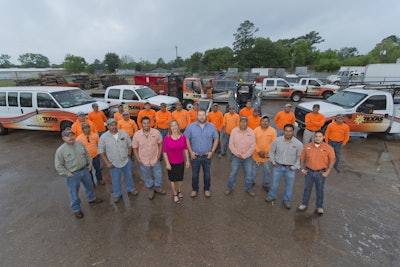
In late-August during a speaking engagement, I asked the audience what they thought the difference was between ‘good’ landscape companies vs. ‘great’ landscape companies. Surprisingly, the answers varied, but none seemed to hit the point that I was trying to evoke from my audience.
I then shared my thoughts and experiences relating to the subject. What I’ve learned over the years from my own experience and from engaging with others is that a good company is very good at fixing problems. In fact, good companies usually do not miss a beat when it comes to problem resolution. The customer complains, the company stops what it is doing and attends to the problem. The company often makes the customer happy, sometimes even happier than the customer was in the first place. The good company seems to do this over and over, fire after fire. It does not mean the good company is bad. In fact, the good company can be very successful in many ways.
In comparison, the ‘Great’ company often has similar problems. The only difference is that the great company does something dramatically different. When the customer side of this issue is fixed, the great company then addresses the company side of the issue. They first ask themselves, what happened? Then they ask, why did the problem occur in the first place? And then they ask, how will we fix it from reoccurring again?
In a nutshell, the good company fixes the problem, while the great company solves the problem.
I have given this concept a lot of thought over the years and more recently in my interactions with my clients. Last month I read my first Jim Collins’ book, “Good to Great”, which is about companies that made the shift from good to great along with 'comparison companies' who did not. It was very eye opening for me. At first I was skeptical that this was just another book analyzing companies that would be very dry with obvious findings. However, this book was very helpful to me in furthering my understanding and thought processes as to what makes a great company, and how at the same time other companies in the same industry with similar opportunities ultimately failed.
Here are seven critical topics I’ve identified that should help you to evaluate whether or not your company is holding true to its core vision, mission and values—and has what it takes to go from good to great.
1. Level 5 leadership
Level 5 leadership is Jim Collins' term for the leadership demonstrated by leaders of great companies. The previously good companies had to be led to greatness, they were not just born into greatness.
While landscape business owners know that leadership is important, many don’t necessarily know what makes a great leader. There are many different types of leaders, but what makes a leader truly effective is one’s ability to look for solutions instead of blaming others. It’s crucial that today’s leaders are willing to get their hands dirty rather than focusing on the glory of the success. A great leader will also plan for the future of the business even when it exceeds their leadership term, and set up their successor to achieve even greater success. We often refer to this as succession planning.
2. Getting the right people on the bus and in the right seats
This is a very common problem in many landscape companies. When problems arise in the company, many will look for someone to blame and will focus on that particular person rather than the problem itself. A great company will first make sure they have the right people on their team (on the bus) before even creating the strategic direction of the company, and then it will determine if the employees are in the right position (in the right seats). If an employee isn't succeeding in their role, the problem may not be that they are a bad fit for the company. Instead, it could be that their role doesn’t play to their strengths and they are simply in the wrong seat.
3. Confront the brutal facts
A human’s natural reaction to a difficult situation is to be defensive, or sometimes offensive. When a problem arises, some choose to simply hide from it. A great company, however, will take that problem head on and not be afraid to make a change. A great lesson learned on my journey and in my reading “Good to Great” is that the great companies were not afraid to listen to the data and to what their consumers were telling them. Once they were aware of a problem or a trend with the customer service delivery model, they acted quickly and were willing to pivot the company to better fit their customers’ needs.
4. Be a hedgehog, not a fox
I learned this from Jim Collins. There are two distinct types of companies, foxes (the good company) and hedgehogs (the great company). While the fox is very clever, it often chases too many opportunities at once and becomes unfocused. On the other hand, the hedgehog is extremely focused and does one thing, and does it GREAT. The fox tries many strategies to catch the hedgehog, where the hedgehog only needs to roll up into a ball to protect itself. Your company needs to find its one big thing that it can be great at and focus on that to drive the business.
5. Stay disciplined
Once you figure out your framework of differentiation, you need to stay focused and stick to it. “Stop doing” lists are more important than “to do” lists.
A disciplined environment helps put both management and employees on their best behavior. Managers must strictly adhere to the company's protocols in order to effectively lead those looking to them as examples. Employees who enter this type of administration know what the expectations are as well as the penalties for committing infractions. This knowledge promotes appropriate actions and conduct which are essential in a successful company.
6. Does it really fit your company?
While we continue to become an even more sophisticated industry, beware of “shiny objects”, especially when it comes to technology. These can become huge distractors for landscape companies. Companies are often worried that they are going to be left behind if they aren’t among the first to adopt a trendy new technology or tool. As a result, they can be easily distracted by new trends that might not fit their business. Technology should be used as an accelerator of momentum, not a creator of it. Only utilize new technology if it is going to propel success and deliver results that will improve the performance of your business.
7. Endure the pain, or wallow in some level of misery and frustration
The doom loop is when a company is reactive, overextended, and delivering disappointing results. The company is stuck in a loop of recurring failure. Success or failure does not occur suddenly, so be patient. Once you start to see success, build upon it. Success will give you the momentum you need to become a great company.
In closing, my biggest revelation in the first part of my career was that I was great at fixing problems. The most important revelation in the second part of my career was that you need to be great at not only fixing problems, but also solving them.
My biggest realization in life and after reading Jim Collins’ book, “Good to Great”, is that the concept of identifying the obstacles before us and having the right people to solve them is key to your long-term and sustainable success.





















